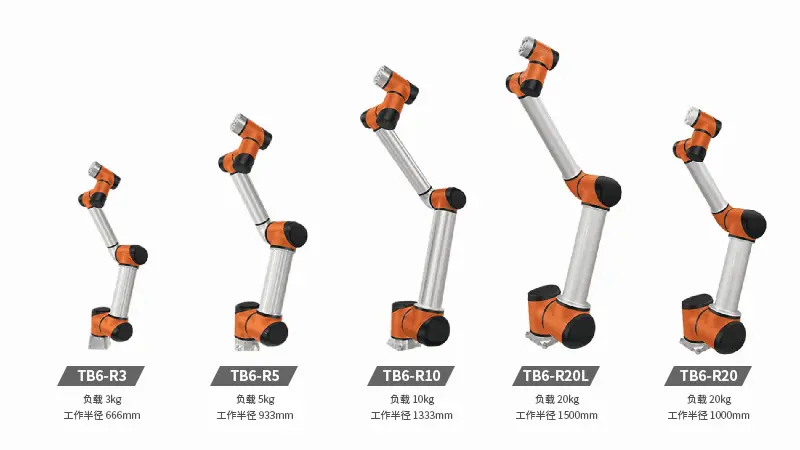How are collaborative robots different compared to traditional robots?
Date:2022-03-10Collaborative robots stand out for their safety, low cost, and user-friendly characteristics.

One of the main selling points of collaborative robots is their flexibility and openness. They provide a rich script language extension library, enhancing software extensibility and portability, making them versatile and flexible. Collaborative robots can assume various roles, typically in service and industrial capacities. Service-oriented ones are deployed in public spaces for tasks like providing information, transporting goods, or offering security protection. Industrial collaborative robots have diverse applications, including picking and placing, packaging and palletizing, assembly, machine maintenance, surface finishing, and quality testing.

In contrast to traditional industrial robots, which are fast, have a large inertia, and high precision but lack safety and operate within enclosures, collaborative robots are designed to work safely alongside humans. They achieve safety by limiting speed, stiffness, and body mass, incorporating collision detection (current/force sensors), and enabling drag-and-teach programming. They comply with relevant safety standards for collaborative robots.

There is no specific structural requirement for collaborative robots; any robot meeting the relevant standards can be considered collaborative. The collaborative robot market comprises various factions with different structural forms, all falling under the umbrella of collaborative robots, with more advanced ones referred to as flexible robots.

Tech Robots is a supplier offering robot bodies and controller application solutions. Leveraging its research, design, and manufacturing capabilities, Taike provides innovative collaborative robots that are safe, reliable, flexible, and easy to use. These robots enhance production efficiency, transform labor-intensive, hazardous, and mechanical operations, and contribute to the development of new robot application markets across a wide range of industries and applications.
Previous Article: Robotics Industry Welcomes New Trends
Next Article: 8 advantages of co-robots